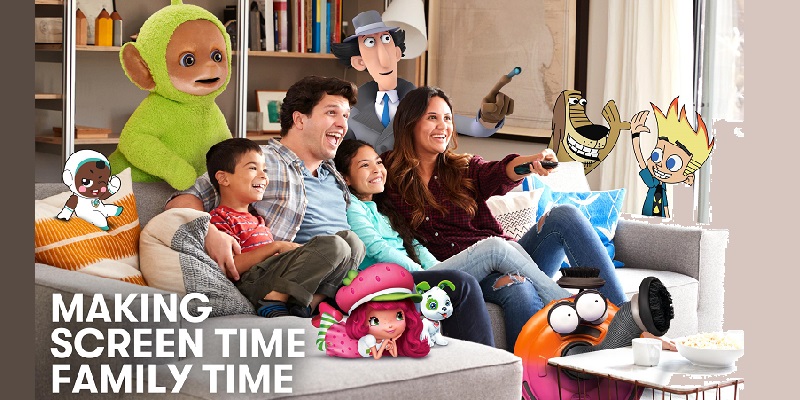
WildBrain Spark, kids’ and family AVOD network and studio, and nScreenMedia, an independent digital TV analyst company that offers research, commentary and analysis on the world of OTT delivery, have today unveiled a report on family co-viewing trends and kids’ influence on video streaming in the home. Commissioned by WildBrain Spark, Making Screen Time Family Time covers timely and topical trends across co-viewing, device usage, attitudes to video sources and ad-supported content.
The headline data reveals that family co-viewing is a trend here to stay. Three-quarters (75 per cent) of the 3,000 parents surveyed* say they watch video content with their children several times a week or more, and the activity cuts across gender, children’s ages, household income levels, and marital status. Co-viewing is a valuable shared activity, and something parents and children make time for throughout their busy day. Supporting data from WildBrain Spark points to longer viewing sessions on YouTube and the YouTube Kids app coming via connected TVs, compared to mobile, tablet and computers.
The data also showed the increasing popularity of ad-supported video-on-demand (AVOD) and the importance of connected TVs for delivering it. Over 90 per cent of parents stated that AVOD is an important source of entertainment for their children, and 62 per cent stated that connected TVs were the preferred device for co-viewing.
WildBrain Spark EVP and managing director Jon Gisby said: “These independent findings support our own data that AVOD platforms, in particular YouTube and YouTube Kids, are increasingly the go-to destination for families looking for premium long-form children’s content. Furthermore, the increasing penetration of connected TVs in the home, coupled with new family habits during the pandemic, is accelerating this trend. Parents and kids are going ‘back to the future’ by watching premium long-form kids’ shows that are streamed to their connected TVs from ad-funded platforms.”
Key findings from Making Screen Time Family Time
Family Co-viewing
Three-quarters (75 per cent) of the parents in the survey group said they watch TV with their children several times a week or more. Two-thirds (66 per cent) expect time spent with their kids watching TV/movies to stay the same or increase once the pandemic is over. In addition, the child is often in charge of the co-viewing session with half of the parents saying their child mostly chooses what they are going to watch together.
The most popular device for co-viewing is the television and 62% of parents said the smart TV is the most popular platform for co-viewing, with 48% using a connected TV device.
Streaming video sources
Two free children’s streaming services dominate the category: YouTube Kids and PBS Kids. Half (50 per cent) of the parents surveyed reported that their children are the exclusive users of these services. These platforms are almost twice as popular as any other child’s service about which the survey asked.
YouTube is a critical resource for parents and their children with 95 per cent of participants saying at least one person in the family uses it, and 70 per cent say their kids are among the users. Additionally, 94 per cent of parents say they monitor kids’ YouTube use, with 61 per cent stating they monitor use all the time.
Ad supported services
In the survey, 90 per cent of parents said free ad-supported services are an important video source for their children. Parents that allow their children to watch ad-supported content were asked how the kids react when the ads come on. Half say their children have the same level of attention or higher as with the show they are watching. Only 13 per cent say their children did not pay any attention.

